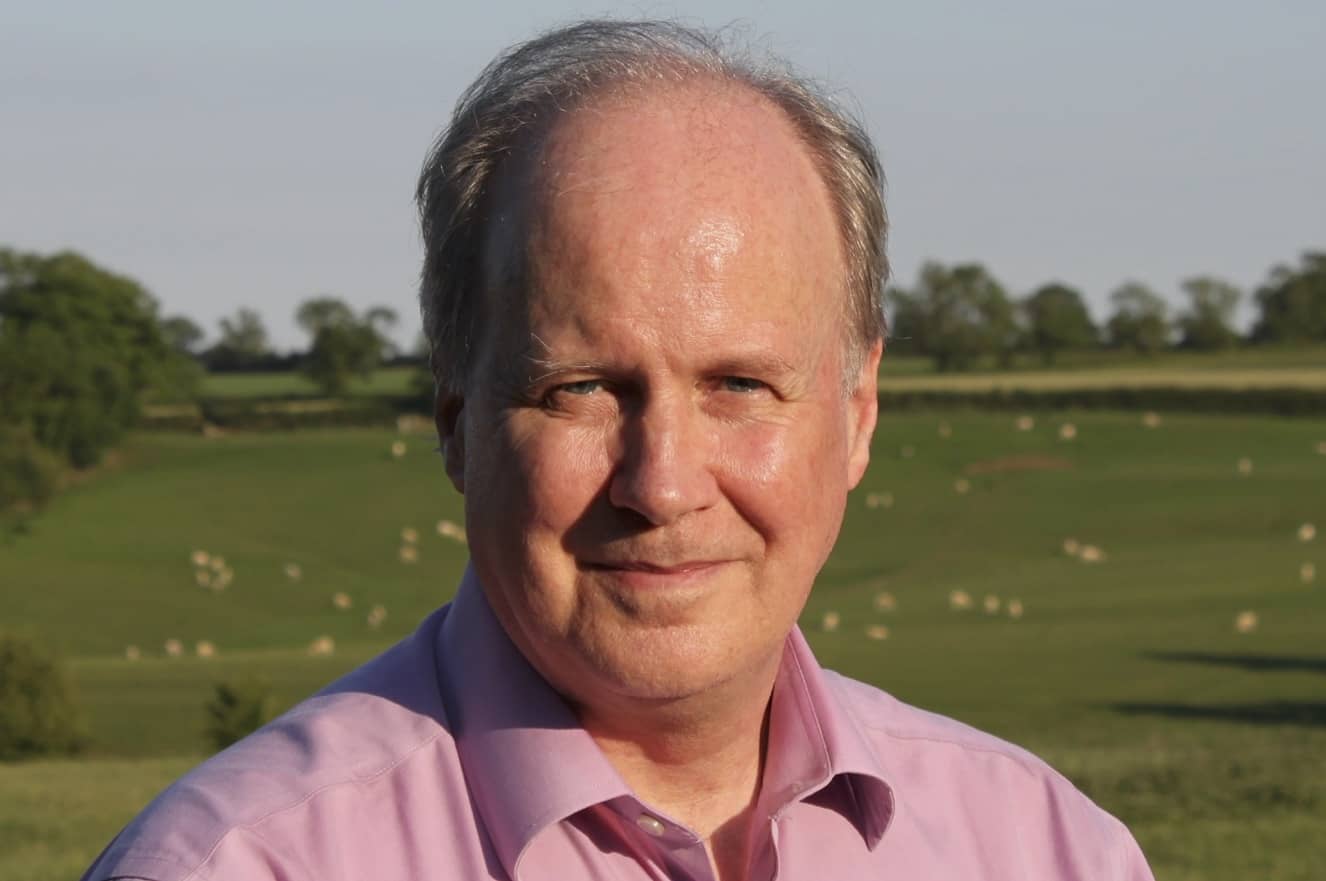
www.buildingsandcities.org/insights/news/remembering-paul-wilkinson.html
Remembering Paul Wilkinson

Michael Davies (University College London) reflects on the recent passing of Paul Wilkinson, a world-renowned environmental epidemiologist.
Professor Paul Wilkinson's interdisciplinary research investigated health in relation to air pollution, the built environment and climate change. This had a profound impact on how we understand the built environment - and the policies and practices that arise as a result.
Paul died suddenly and unexpectedly on 11 September 2022, aged 62. Paul worked at London School of Hygiene and Tropical Medicine for almost 30 years. He trained in medicine and public health in Oxford and London.
My collaboration with Paul has been central to my research for many years and I was extremely fortunate to work with him on over 20 projects. Just a few short months ago, Paul and I were in Kenya together for a series of meetings. On my last evening there, over a beer, we reminisced and talked about our plans for the future. As always, it was a huge pleasure to spend time with Paul and it's very difficult to think that I'll no longer be able to do that.
I first met Paul after his interest in the connections between the built environment and health had been established - for example, his ground-breaking work with regards to the link between excess deaths in winter and low indoor temperatures (Wilkinson et al. 2001). Whilst continuing to work on a range of environmental health issues, Paul then increasingly began to focus on the links between climate change and human health.
In an important milestone, Paul led a key piece of work in 2009 on the connections between housing, climate change mitigation and health (Wilkinson et al. 2009) as part of a Lancet Series of six papers aiming to accelerate action on greenhouse-gas emissions (Haines et al. 2009). This influential work laid the foundations for much of Paul's future research in this area. Paul was always fond of an acronym and via his leadership of projects such as 'PURGE' (Public health impacts in urban environments of greenhouse gas emissions reduction strategies) and 'AWESOME' (Air pollution and weather-related health impacts: methodological study of multi-pollutant exposures) he enabled substantial progress on our understanding of the health benefits of rapid and transformative action.
Paul was still leading several research projects in addition to being Scientific Director of the Wellcome Trust-funded project 'Complex Urban Systems for Sustainability and Health' (CUSSH) and Director of the 'NIHR Health Protection Research Unit in Environmental Change and Health'. In all his work, he guided research on important issues (e.g. Milner et al. 2020, Deloy et al. 2021, Petrou et al. 2022) but also encouraged colleagues to 'think big' and engage with policy makers to help accelerate vital action. Paul was also instrumental to the formation and development of The Lancet Countdown which aims to ensure that health is at the centre of responses to climate change. In particular, Paul continued to make important contributions to the Countdown's work on mitigation actions and health co-benefits (Romanello et al. 2022).
Paul was an inspirational colleague. Above all we will remember Paul as generous, kind, warm and always with a smile on his face. Paul was unfailingly modest about his achievements - he was, however, a world-leading scientist who shaped and steered his research field in a hugely impactful way. We will miss him, and his brilliance, terribly.
References
Deloly C., Roué-Le Gall A., Moore G., Bretelle L., Milner J., Mohajeri N., Osrin D., Salvia G., Symonds P., Tsoulou I., Zimmerman N., Wilkinson P., Davies, M. (2021). Relationship-building around a policy decision-support tool for urban health. Buildings and Cities, 2(1), 717-733.
Haines A., McMichael A.J., Smith K.R., Roberts I., Woodcock J., Markandya A., Armstrong B., Campbell-Lendrum D., Dangour A., Davies M., Bruce N., Tonne C., Barrett M., Wilkinson P. (2009). Public health benefits of strategies to reduce greenhouse-gas emissions: overview and implications for policy makers. The Lancet, 374(9707), 2104-2114.
Milner J., Hamilton I., Woodcock J., Williams M., Davies M., Wilkinson P., & Haines A. (2020). Health benefits of policies to reduce carbon emissions. British Medical Journal, 368.
Petrou G., Hutchinson E., Mavrogianni A., Milner J., Macintyre H., Phalkey R., ….Wilkinson P. (2022). Home energy efficiency under net zero: time to monitor UK indoor air. British Medical Journal, 377.
Romanello M., Di Napoli C., Drummond P., Green C., Kennard H., Lampard P., …. Wilkinson P,. …. et al. (2022). The 2022 report of the Lancet Countdown on health and climate change: health at the mercy of fossil fuels, The Lancet.
Wilkinson P., Landon M., Armstrong B., Stevenson S., McKee M. (2001). Cold comfort: the social and environmental determinants of excess winter death in England, 1986-1996. York: Joseph Rowntree Foundation.
Wilkinson P., Smith K. R., Davies M., Adair H., Armstrong B., Barrett M., Bruce N., Chalabi Z., Haines A., Hamilton I., Oreszczyn T., Ridley I., Tonne C. (2009), Public health benefits of strategies to reduce greenhouse-gas emissions: household energy. The Lancet, 374(9705), 1917 - 1929.
Latest Peer-Reviewed Journal Content
A living lab approach to co-designing climate adaptation strategies
M K Barati & S Bankaru-Swamy
Mediation roles and ecologies within resilience-focused urban living labs
N Antaki, D Petrescu, M Schalk, E Brandao, D Calciu & V Marin
Negotiating expertise in Nepal’s post-earthquake disaster reconstruction
K Rankin, M Suji, B Pandey, J Baniya, D V Hirslund, B Limbu, N Rawal & S Shneiderman
Designing for pro-environmental behaviour change: the aspiration–reality gap
J Simpson & J Uttley
Lifetimes of demolished buildings in US and European cities
J Berglund-Brown, I Dobie, J Hewitt, C De Wolf & J Ochsendorf
Expanding the framework of urban living labs using grassroots methods
T Ahmed, I Delsante & L Migliavacca
Youth engagement in urban living labs: tools, methods and pedagogies
N Charalambous, C Panayi, C Mady, T Augustinčić & D Berc
Co-creating urban transformation: a stakeholder analysis for Germany’s heat transition
P Heger, C Bieber, M Hendawy & A Shooshtari
Placemaking living lab: creating resilient social and spatial infrastructures
M Dodd, N Madabhushi & R Lees
Church pipe organs: historical tuning records as indoor environmental evidence
B Bingley, A Knight & Y Xing
A framework for 1.5°C-aligned GHG budgets in architecture
G Betti, I Spaar, D Bachmann, A Jerosch-Herold, E Kühner, R Yang, K Avhad & S Sinning
Net zero retrofit of the building stock [editorial]
D Godoy-Shimizu & P Steadman
Co-learning in living labs: nurturing civic agency and resilience
A Belfield
The importance of multi-roles and code-switching in living labs
H Noller & A Tarik
Researchers’ shifting roles in living labs for knowledge co-production
C-C Dobre & G Faldi
Increasing civic resilience in urban living labs: city authorities’ roles
E Alatalo, M Laine & M Kyrönviita
Co-curation as civic practice in community engagement
Z Li, M Sunikka-Blank, R Purohit & F Samuel
Preserving buildings: emission reductions from circular economy strategies in Austria
N Alaux, V Kulmer, J Vogel & A Passer
Urban living labs: relationality between institutions and local circularity
P Palo, M Adelfio, J Lundin & E Brandão
Living labs: epistemic modelling, temporariness and land value
J Clossick, T Khonsari & U Steven
Co-creating interventions to prevent mosquito-borne disease transmission in hospitals
O Sloan Wood, E Lupenza, D M Agnello, J B Knudsen, M Msellem, K L Schiøler & F Saleh
Circularity at the neighbourhood scale: co-creative living lab lessons
J Honsa, A Versele, T Van de Kerckhove & C Piccardo
Positive energy districts and energy communities: how living labs create value
E Malakhatka, O Shafqat, A Sandoff & L Thuvander
Built environment governance and professionalism: the end of laissez-faire (again)
S Foxell
Co-creating justice in housing energy transitions through energy living labs
D Ricci, C Leiwakabessy, S van Wieringen, P de Koning & T Konstantinou
HVAC characterisation of existing Canadian buildings for decarbonisation retrofit identification
J Adebisi & J J McArthur
Simulation and the building performance gap [editorial]
M Donn
Developing criteria for effective building-sector commitments in nationally determined contributions
P Graham, K McFarlane & M Taheri
Join Our Community

The most important part of any journal is our people – readers, authors, reviewers, editorial board members and editors. You are cordially invited to join our community by joining our mailing list. We send out occasional emails about the journal – calls for papers, special issues, events and more.
We will not share your email with third parties. Read more



Latest Commentaries
COP30 Report
Matti Kuittinen (Aalto University) reflects on his experience of attending the 2025 UN Conference of the Parties in Belém, Brazil. The roadmaps and commitments failed to deliver the objectives of the 2025 Paris Agreement. However, 2 countries - Japan and Senegal - announced they are creating roadmaps to decarbonise their buildings. An international group of government ministers put housing on the agenda - specifying the need for reduced carbon and energy use along with affordability, quality and climate resilience.
Building-Related Research: New Context, New Challenges
Raymond J. Cole (University of British Columbia) reflects on the key challenges raised in the 34 commissioned essays for Buildings & Cities 5th anniversary. Not only are key research issues identified, but the consequences of changing contexts for conducting research and tailoring its influence on society are highlighted as key areas of action.